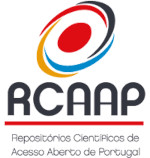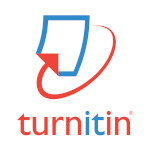Code of Ethics
The Technology Journal adheres to the ethical principles applicable to the editing of scientific journals and the publication of scientific articles, principles that are essential for the journal to fulfill its role as a guardian of scientific knowledge. It is based on the dissemination of technological and scientific knowledge in the fields of architecture, computer science, civil engineering, electrical engineering, electronic engineering, mechanical engineering, mechatronics engineering, production engineering, telecommunications engineering, environmental and sanitary engineering, and other related sciences. Editors, authors, and reviewers must follow these principles to ensure ethics and integrity in the publication process. Below we detail the ethical standards that must be followed by the actors involved in the editorial process.
Authorship
The authorship of the publication must include only individuals who have contributed significantly to the preparation of the work presented. All authors must necessarily meet the following criteria: (i) they must have made substantial contributions to the conception or design of the work; or the acquisition, analysis, or interpretation of data for the work; (ii) they must have participated in drafting the work or critically revising it for important intellectual content; (iii) they must have approved the final version to be published; (iv) they must agree to be accountable for all aspects of the work, ensuring that questions related to the accuracy or integrity of any part of the work are appropriately investigated and resolved (As per the guidelines of the International Committee of Medical Journal Editors - ICMJE).
The author who submits the article must ensure that all co-authors have seen and approved the final version of the article and agreed to its submission for publication in the Technology Journal. If the journal's editors identify issues with the article's authorship (the editors use the COPE guidelines to identify such issues), the authors will be contacted to provide clarifications. If an issue is indeed identified, the article will be withdrawn from the evaluation process. Concerning authorship, the inclusion (or exclusion) of authors from the article during or after the editorial process will be subject to the editor's case-by-case evaluation and must have the consent of all authors of the article. Adding and removing authors after submission for review by the journal will not be permitted (exceptional cases will be evaluated by the journal's Editorial Board).
Duplicate Publication
Submitting the same manuscript (or a highly similar manuscript) previously published in another scientific journal for publication constitutes unethical publication behavior. If duplication is identified during the editorial process, the authors will be notified, and the article will be withdrawn from the process. If duplication is identified after publication, the article will be subject to withdrawal from the edition in which it was published, and the journal's readers will be duly informed of the case. Attention: results from studies previously published in conference proceedings are not considered duplicate publications, and the authorship of the research group must be respected. Additionally, authors must inform prior presentation at a scientific event in the submission. Articles derived from theses and dissertations are accepted, and authors must add this information in the "notes to the editor" field in the submission system.
Plagiarism
All articles submitted to the Technology Journal undergo a plagiarism check during the peer review stage using the Turnitin tool. If sections with similarity (except direct citation) are identified and their reproduction is total and/or without citation, the authors will be contacted to provide clarifications. In the absence of clarifications from the authors, the editors will archive the submission. During the peer review process, reviewers may also find evidence of plagiarism. If this happens, reviewers will notify the editors (providing the relevant evidence), and the editors will investigate the suspicion of plagiarism using the following COPE flowchart. If the suspicion of plagiarism is confirmed, the editors will archive the submission.
Citations and References
Articles must cite appropriate and relevant literature to support the claims made. Excessive self-citation, unnecessary citations not relevant to the content of the presented article, and any other form of citation manipulation are considered unethical practices. If citation manipulation is identified, it will result in the submission being archived.
Conflict of Interest
Authors must declare any potential conflicts of interest - whether professional or financial - related to the article. Authors must also disclose all sources of funding for the research reported in the article. If undisclosed conflict of interest evidence is found, the editors will use the following COPE flowchart to proceed with the necessary actions. Editors and reviewers invited to evaluate articles also need to disclose conflicts of interest that may bias the editorial process, such as personal, academic, or financial relationships. Reviewers should not evaluate manuscripts if they believe they are involved in any conflict of interest. If there is a potential bias, the editors should pass the leadership of the article process to another editor.
Data Fabrication
Data fabrication is the unethical practice of inventing data or research results and recording or reporting them in the article. The Technology Journal is strictly against data fabrication, as this practice undermines the integrity of the scientific literature and its credibility, leading to erroneous conclusions. Therefore, if data fabrication is suspected in submitted articles, the editors commit to using the COPE flowchart to proceed with the necessary actions. If data fabrication is confirmed, the editors will archive the submission.
Confidentiality
The Technology Journal keeps all details of a submitted manuscript confidential and does not comment on or publish about manuscripts while they are under consideration or when they are rejected. The editors and reviewers of the Technology Journal are committed not to disclose data from manuscripts (or supplementary materials) before their publication and not to use the knowledge they acquired from an unpublished article to promote their interests. If reviewers are accused of misappropriating ideas from a work under review, the editors of the Technology Journal commit to using the following COPE flowchart to help deal with this situation.
Errors in Published Works
When a significant error or inaccuracy in a published work is discovered, it is the author's obligation to immediately notify the journal editor and cooperate with the editor to retract or correct the article.
Research Involving Humans
All research involving humans (individuals, samples, or data) must have been conducted following the current resolutions of the National Health Council (CNS) (resolution Nº 466 of December 12, 2012).
Research Involving Animals
When animals are used in research, they are expected to be treated humanely and following the national guidelines on the subject, presented in law 11.794 of October 8, 2008, known as the Arouca Law.
Research in Human and Social Sciences
Research in Human and Social Sciences involving data obtained directly from participants or identifiable information must follow the guidelines of Resolution Nº 510 of April 7, 2016, and present approval by an Ethics Committee when applicable.
Approval by an Ethics Committee and Obtaining Informed Consent
Before starting the study, authors must have obtained ethical approval for all protocols from their institution's ethics committee to confirm that the study meets national and international guidelines for research on humans or animals. A document confirming approval by the ethics committee must be included as a supplementary attachment to the submission, including the name of the ethics committee and reference numbers (Certificate of Presentation for Ethical Consideration and approval protocol). Authors should not include these data in the body of the article, as it may facilitate the identification of authors and compromise the double-blind review process. When approval is not required, according to the exceptions provided in current legislation, authors do not need to present ethics committee approval.
The authors of the article must have obtained informed consent from the study participants. A statement to confirm this must be included in the manuscript. Authors should be prepared to provide dated and signed copies by the participants to the journal's editorial team if requested.
Use of Artificial Intelligence (AI) Tools
The Technology Journal understands that only human beings can receive authorship credits for manuscripts, and authors must recognize their sources. The use of AI tools for drafting any part of the manuscript or generating or publishing images is not permitted. It is the authors' responsibility to assume public accountability and acknowledge their materials' sources. If AI tools are used to develop or improve any part of the manuscript, this information must be explicitly stated in the Abstract and Method sections, in the section related to ethical aspects, including replication and identification. The editorial team of the Technology Journal reserves the right to use AI detection tools such as GPTZero, AI Text Classifier, AI Content Detector, Open AI Detector, among others.














